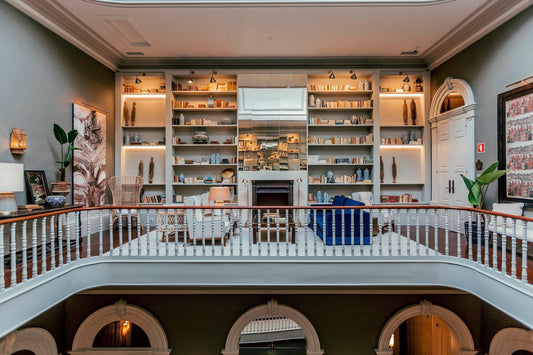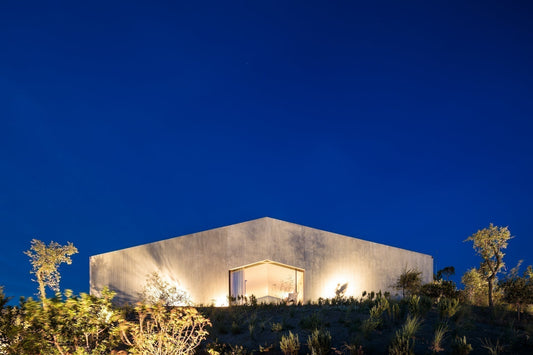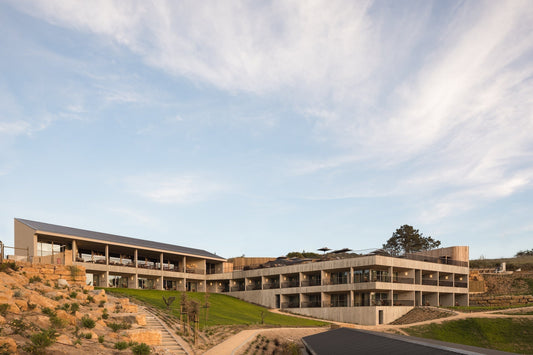Aēsop in Sydney: Henry Wilson & Kate Forbes.
Photography by Aesop.
To commemorate its inaugural design for interiors—the Brass Oil Burner—Aēsop collaborated with Sydney-based designer Henry Wilson. With aim to create a modest piece with a sight of sophisticated for the space and timeless factor, the burner purposely designed with both pleasingly amorphous shape and practical property of its heat transfer. Together, Béatrice Oil Burner Blend—the fourth blend—stimulates senses with enlivening earthy from featured notes of Patchouli and Cedarwood Atlas celebrated.
We spoke with the designer himself at Studio Henry Wilson in Darlinghurst with Kate Forbes; General Manager, Products & Research Development on their design density. On other day, we paid a little visit to Aēsop Balmain to understand architectural existence and Henry Wilson’s materiality concept; the man’s first collaboration with Aēsop.

Tell us how your relationship with Aēsop came to be.
HENRY: It was a chance encounter with the founder of Aēsop in a café in Melbourne, around six to seven years ago. He had seen a newspaper article about me, so when he heard my name mentioned, he tapped me on the shoulder and said, “I’d like to talk to you, would you like to have coffee?” I had then recently been back in Australia after three to four years living overseas.
So, over coffee, we had a chat about design, its philosophies as well as what I had been doing. It didn’t really go much further than that until one day he was in Balmain [in Sydney], where my original studio was. As I had been based in the area, he thought perhaps I’d like to design the Aēsop store in Balmain.
Our working relationship started from there to another store as well as to the discussion on the oil burner. That’s how everything fell into place.
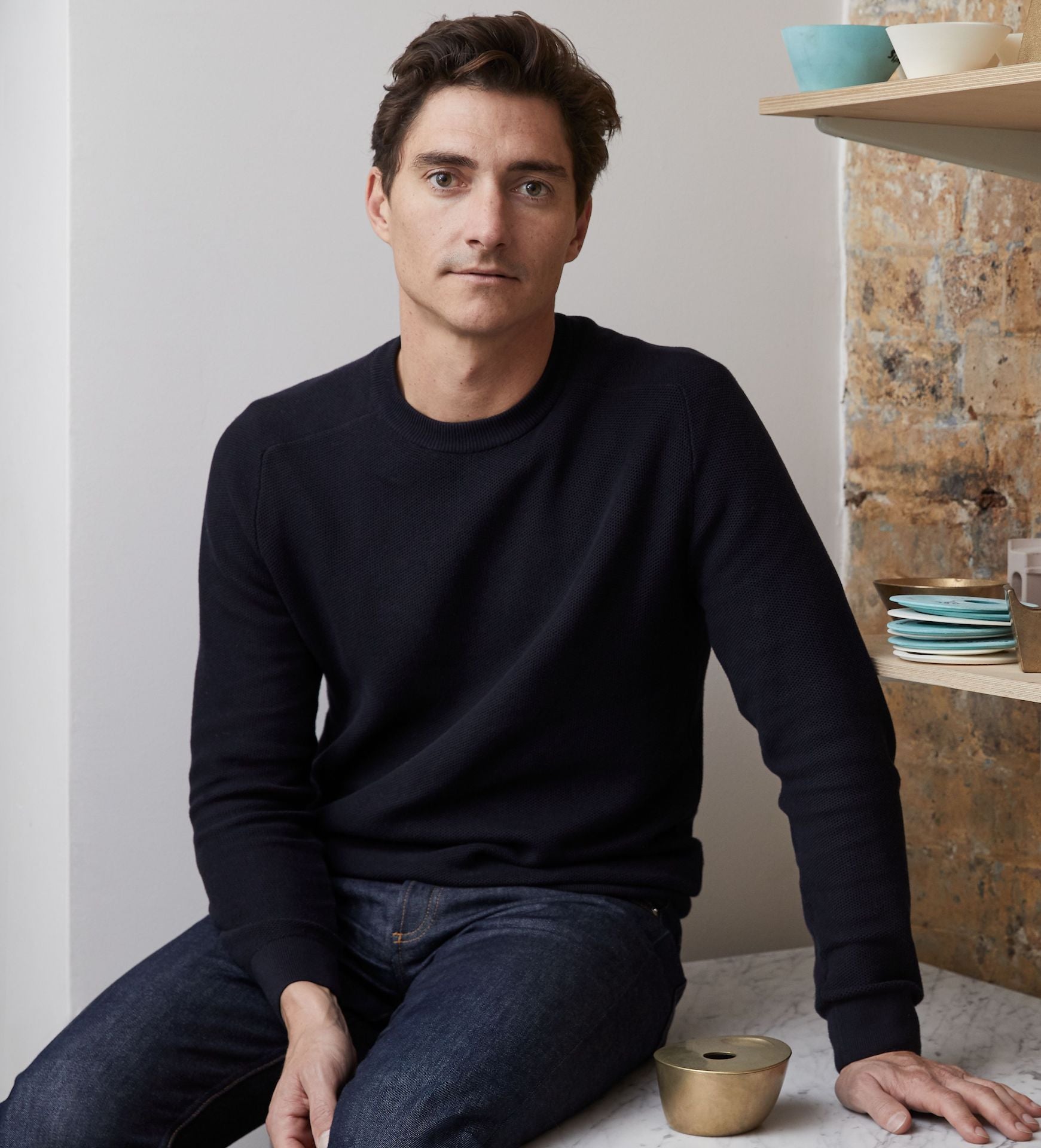
Why did Aēsop decide to create the brass oil burner?
KATE: As we are all aware, the Aēsop experience has always been synonymous with scent – it’s always been a part of what we do. About 10 years ago, we introduced the oil burner blends into our range.
Since then, we’ve been asked [items] we would recommend and suggest. Realising we couldn’t find anything we had wanted to suggest, we thought this was the opportunity for us to create something relatively new, something we had no experience in. So, at that time, an Australian designer like Henry Wilson seemed like the perfect partner for us to work with on it.
Interestingly, our very first conversation with Henry was not about creating the product [the brass oil burner]. We actually went to him with quite a different brief - we had the idea of creating olive oil candles mixed with essential oils. (We’ll hear more of how we went through that journey later on.)
But, ultimately, we’re really proud of where we have ended up, which is the (intersection) of something very functional, the passion we have for design as well as scents [combined into] one object.

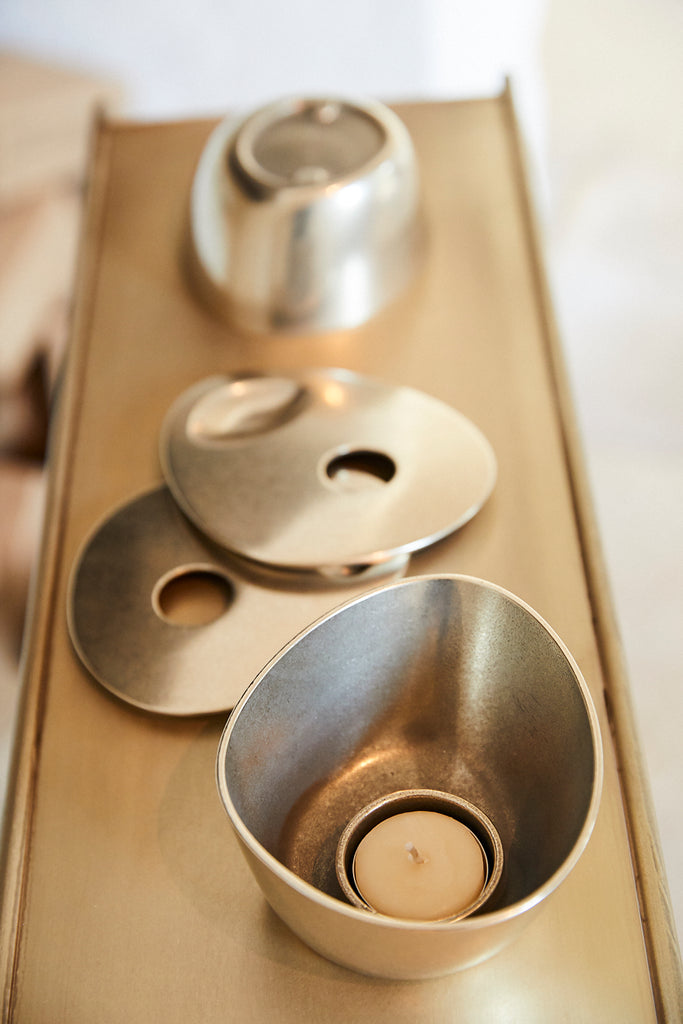
Can you share a little bit about the inspiration behind the design?
HENRY: There were many different prototypes, many different kinds of things that happened as we went down the path of creating the oil burner. Brass is really the key material because of its heat-conducting quality and its affinity to candle lights. It’s a historic combination of brass and candle light – you get this warm feeling from the material. And when that soft [candle] light hits the brass, it has a golden allure to it.
There’s also the way that brass pours into the mould … the way it’s created, [there will be] slight imperfections in the material [we’ve had] to embrace in the design. No two pieces are actually the same – the slights variants create a personality to each [piece].
Since Aēsop started more than 30 years ago, consumers have had so much more access to information about skincare, about the ingredients used. Has that changed the way Aēsop approaches R&D?
KATE: Not directly. Even from the start, we have been very open with our customers on the ingredients we use and why we use them – it’s a big part of the way we train our consultants. We’ve always had those principles in our products … we’re putting everything in there for a purpose. That can sometimes seem obvious, but not everyone formulates with that in mind.
We speak to our consultants to help them understand what we’re using. We’ve always been very transparent with our consumers to help them make educated choices on what they’re looking for and what they hope these products can do for them – again, that’s part of a very honest conversation we’ve always had.
So, I think that hasn’t changed, but I do agree that consumers are becoming a lot more educated and inquisitive. So, we are always equipping our consultants to ensure they have the technical knowledge that we have in the lab to be able to convey [to consumers] why we’ve chosen to use what we use.
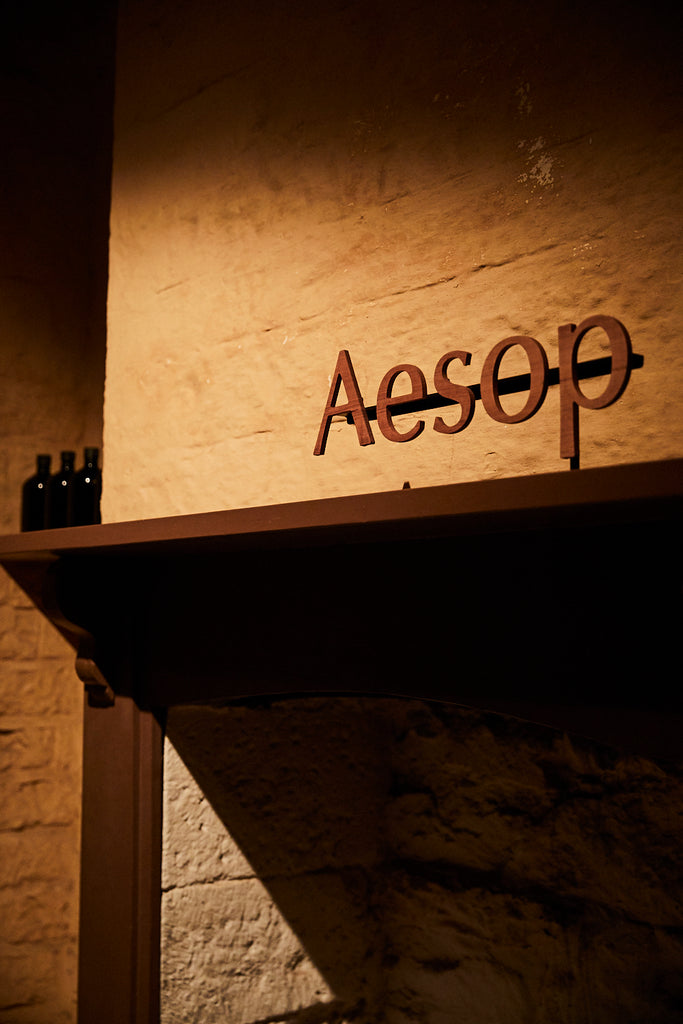
Does travel play an important role [in your design journey]? How does travel inspire you to create your products?
HENRY: Travel’s a hugely important part of design. I think it’s just that process of being open to analysing your world. A big part of design is observing and there’s no better place to observe than when you travel because you actually get to see people doing things outside of the context you’re used to. I travelled to Myanmar (Burma) recently and as I was walking through a market, I could see some incredibly inventive solution to things that otherwise I wouldn’t normally see.
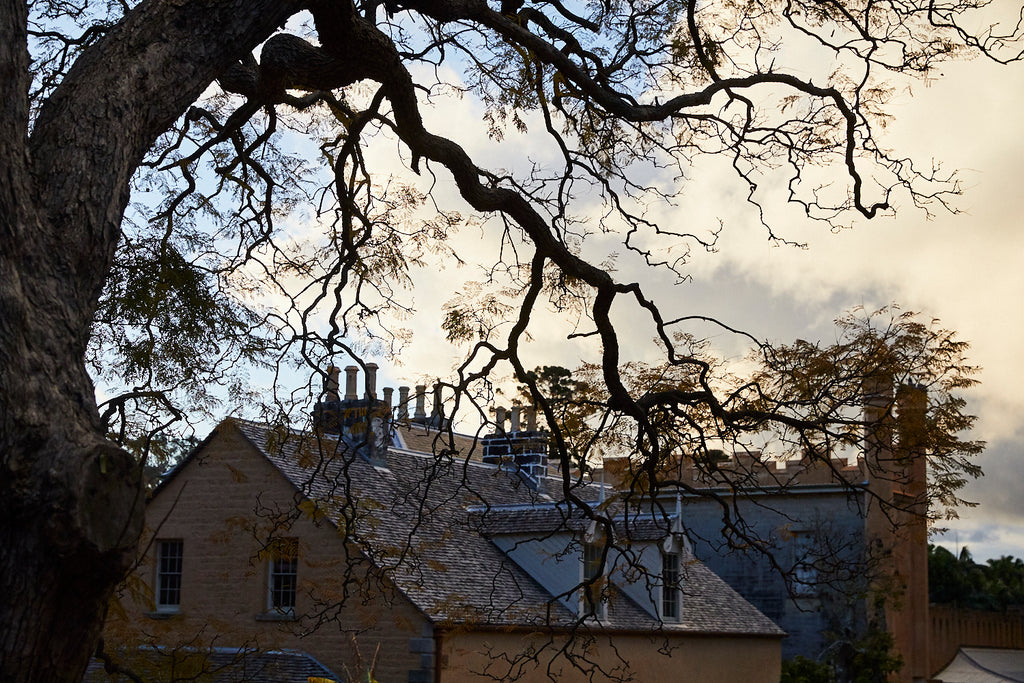
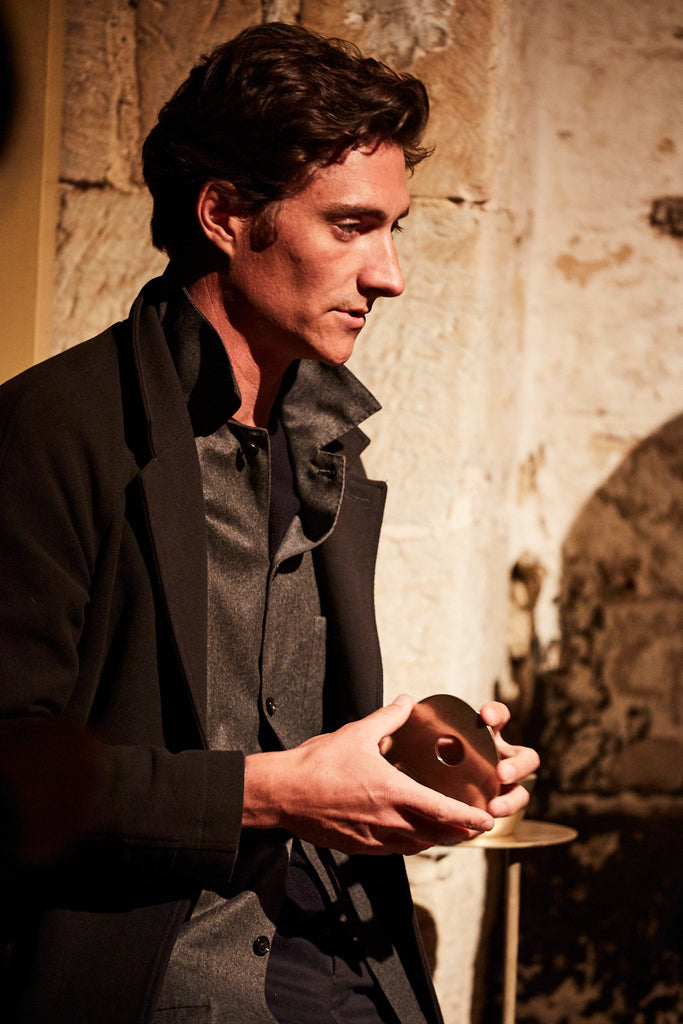
Do you have a particular city that really inspires you for Studio Henry Wilson?
HENRY: There are so many different places actually. In general, I think Europe has some of the most interesting [spots], the flea markets, in particular. The Netherlands have the most amazing flea markets. They have street markets and a very rich culture of trading on a particular day where everybody puts all their pieces and things they don’t want, like some sort of a garage sale, they’d put [their items] on the streets. You can walk around the neighbourhood and trade things with people. Walking through those days and also their markets, you get a feel of the kind of things that existed in that culture.
.....

This interview appeared in Sensory Issue. To continue reading, you can buy print or digital.

